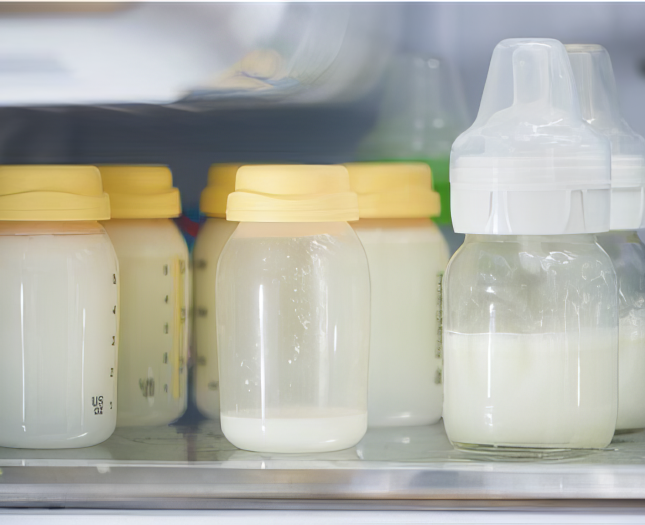Storing and thawing breastmilk

Know how to safely store and thaw breastmilk for your baby.
How to store breastmilk
Pour your freshly pumped breastmilk into a sanitized storage container each time you pump.
Do not mix warm expressed breastmilk with cooled or frozen breastmilk.
| Stored | How long it can be stored |
|---|---|
| At room temperature | Up to four hours |
| In an insulated cooler bag with frozen gel packs | Up to 24 hours |
| In the refrigerator (not in the door) | In the NICU: up to 72 hours Outside the NICU: up to 96 hours |
| In the refrigerator freezer | Up to four months at -18 C |
| In a deep freezer | Up to 12 months at -20 C |
How to bring breastmilk to the NICU
Follow these steps and bring your fresh breastmilk to the NICU as soon as possible.
- Place labelled bottles of your breastmilk in a clean bag or container.
- Use an insulated cooler or container with a freezer pack.
- Refrigerate immediately when you come to the NICU.
Thawing frozen breastmilk
Use the breastmilk that has been frozen the longest first.
You can thaw frozen breastmilk:
- at room temperature
- in a refrigerator
- in a container of warm water from the tap
- in a milk warmer that has a thaw feature (follow manufacturer instructions)
Frozen milk can separate when thawed, but you can gently swirl to mix it.
If the milk is not used within 24 hours of thawing, you must throw it out. Do not refreeze breastmilk that has been thawed.
Warming breastmilk
Never microwave breastmilk. Microwaving destroys nutrients and can cause hotspots that may burn your baby’s mouth.
Do not cover the lid or nipple with water when it is being warmed. This can contaminate the breastmilk.
You can warm breastmilk in:
- a container of warm water from the tap (for no longer than 15 minutes)
- a milk warmer (follow manufacturer instructions)
Gently shake the container to mix it.
Testing the temperature
Test the breastmilk on the inside of your wrist to make it sure it not too hot. It should feel warm on the wrist. If the milk is too hot, run the bottom of the bottle under cold tap water.
Do not put the bottle nipple in your mouth to check the temperature or to clean it. This can pass on germs to your baby.